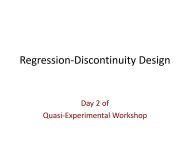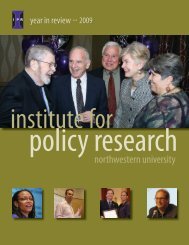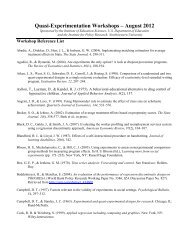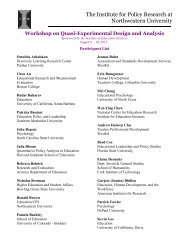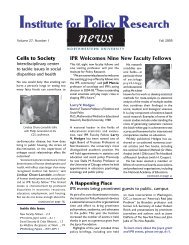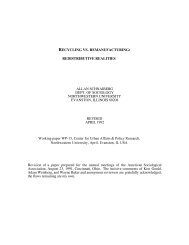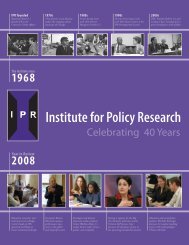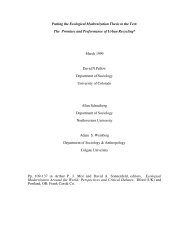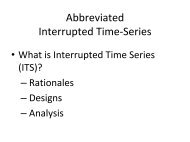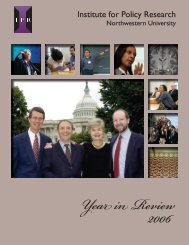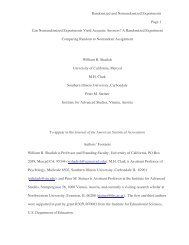Download working paper PDF - Institute for Policy Research ...
Download working paper PDF - Institute for Policy Research ...
Download working paper PDF - Institute for Policy Research ...
Create successful ePaper yourself
Turn your PDF publications into a flip-book with our unique Google optimized e-Paper software.
spending. Figure 3 begins in 1988, because we have no reason to believe that<br />
underreporting in 1988-1989 affected these ratios.<br />
Figure 3. Time Trends in Claiming by Age Group<br />
Ratio of elderly to adult non-elderly claim rates, adjusted <strong>for</strong> number of hospital discharges and inpatient<br />
days and share of US healthcare spending, <strong>for</strong> 12,108 nonduplicate, non-nursing-home, med mal cases closed<br />
from 1988-2007 with payout > $25,000 in 1988 dollars.<br />
The trends are qualitatively similar <strong>for</strong> all three intensity measures. The relative<br />
frequency of claims by the elderly rises strongly through the early 2000s, but then levels<br />
off well below the adult non-elderly level. Controlling <strong>for</strong> inpatient days – our preferred<br />
intensity measure – the elderly/adult non-elderly ratio rises from 20% at the end of the<br />
1980s to about 50% in the early 2000s.<br />
We turn next to regression analysis of time trends in the frequency of large paid<br />
claims per 100,000 inpatient days, using year, a constant term, and a structural break<br />
variable, which we call “post-re<strong>for</strong>m period,” to reflect the extent to which the 2003<br />
re<strong>for</strong>ms influence claim rates in each post-re<strong>for</strong>m year. 29 This variable, which is zero <strong>for</strong><br />
years be<strong>for</strong>e 2003, nearly zero <strong>for</strong> 2003, and rises toward 1 thereafter, must be constructed<br />
with care. The observed ratio of post-re<strong>for</strong>m claims to total claims in a given year is<br />
biased downward by the re<strong>for</strong>ms, which suppress post-re<strong>for</strong>m claims. 30 As detailed in the<br />
Appendix, we there<strong>for</strong>e use pre-re<strong>for</strong>m data on claim survival times to estimate the<br />
29 In this and all other regressions, year is coded as year – first year in sample. Thus, in Table 3, year is<br />
coded as year – 1990. In a regression with year and constant term as the only independent variables, the<br />
coefficient on the constant term is the estimated value of the dependent variable in the first year in the<br />
sample.<br />
30 For example, suppose that in a given period, we would expect: (i) without the effect of the re<strong>for</strong>ms on<br />
claim rate, to see 20 large paid claims; (ii) half of these hypothetical claims would be pre-re<strong>for</strong>m; and (iii)<br />
re<strong>for</strong>m reduces claim rates by 50%. We would then observe 10 pre-re<strong>for</strong>m and 5 post-re<strong>for</strong>m claims. Twothirds<br />
of observed claims (10/15) will be pre-re<strong>for</strong>m. We would wrongly infer that we are only 1/3 of the<br />
way into the post-re<strong>for</strong>m period, instead of half-way.<br />
10



